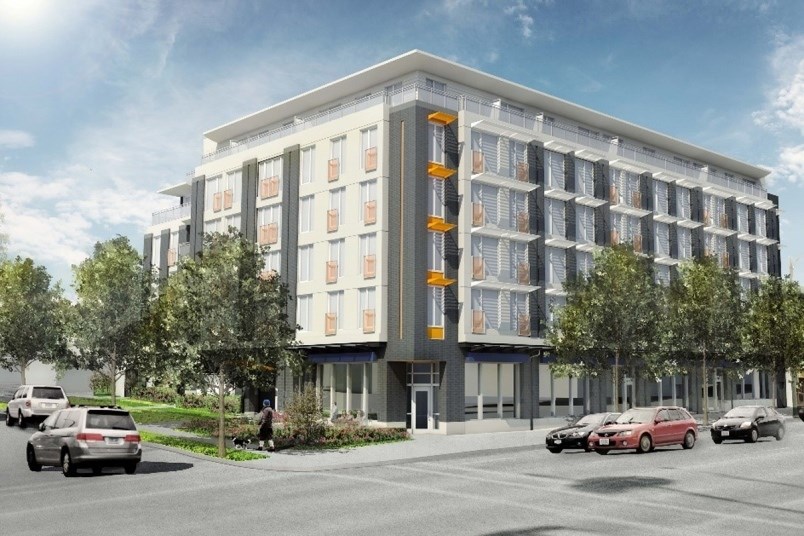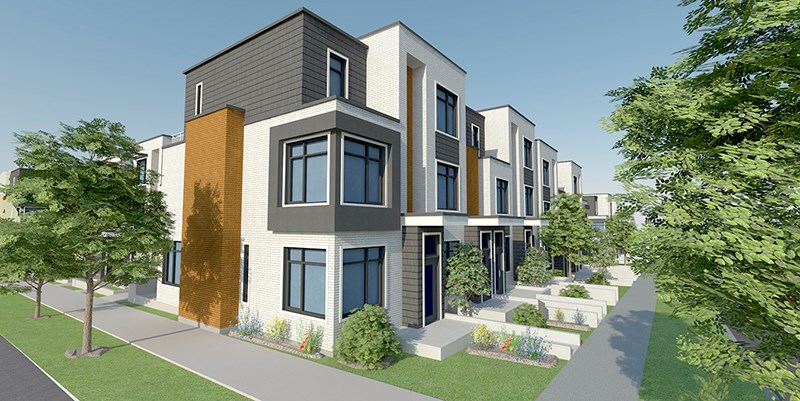Judging from architectural renderings, a new residential development planned for the 600-block of Foster Avenue in Coquitlam looks like a typical townhouse project.
But Scott Kennedy, one of the architects behind the development, said residents will realize how unique their home is when they receive their hydro bills.
That’s because the project is designed to new Passive House standards and will consume 90% less heating and cooling energy than conventional buildings.
It is the first project of its kind in the Tri-Cities and one of only a handful to recently receive approvals in Metro Vancouver.
“They are very comfortable buildings,” he said in an interview with The Tri-City News. “They don’t leak any air in or out.”
Passive House is an international standard for energy efficiency that starts with the building envelope.
Kennedy said the walls and floors at the Foster Avenue development will be thicker to accommodate larger quantities of insulation. The buildings will also feature high-quality windows and will be as air-tight as possible, preventing any leakage.
Filtered air is supplied to all of the living spaces — primarily the living room and bedrooms — while air from the wet areas, like the kitchen and bathroom, is extracted, Kennedy said. This means temperatures remain stable year-round throughout the home and residents receive excellent air quality, he said.

This is not the first time Kennedy and his company, Cornerstone Architecture, has been involved in developing a Passive House. Earlier this year, an 85-unit market rental building in Vancouver called The Heights opened at Skeena and Hastings streets near Boundary Road, billed as the largest mixed-use complex built to Passive House standards in Canada.
But Kennedy noted that the designs are becoming more common and new projects already approved will surpass The Heights in size by the end of the year.
“There are bigger ones coming,” he said. “There is a bigger one in Fort St. John that is nearing completion.”
Edward Kolic, principal with Eighth Avenue Development Group, which developed The Heights and is currently working with Cornerstone on the Coquitlam townhouse project, said his company has long been a proponent of energy-efficient building types.
Townhouses will likely be easier to build to such standards because they do not require the large parkade that was necessary for the Skeena Street project, along with the retail commercial outlets at street level, he said.
Kolic said he was initially turned on to the idea of using Passive House standards by the architect and said he has been happy to be on the leading edge of sustainable design.
“It is about simplicity,” he said. “The analogy I use is the farm houses built out of stone. The walls are thick. It keeps it warm in the winter and cooler in the summer. It is that simple.”
He said has learned a lot from his experience with the Vancouver project but there are still some unknowns about taking the concept to the suburbs. Homes built to the Passive House standard are more expensive, Kolic noted, although the costs are offset by the long-term savings in energy consumption.
“We don’t know yet,” he said, when asked whether there is a market for Passive House standard designs in the Tri-Cities, later adding: “We will see what happens here.”
With The Heights, Kolic estimated that 15% of the tenants who moved in chose the development because it was constructed with sustainable building practices.
He called the push toward Passive House standards a “movement” popular in Europe that is slowly starting gain traction in North America.
“The part of the market where there is a movement toward sustainable living and sustainable building practices… They are going to be in tune with [the Coquitlam townhouse project],” he said.
gmckenna@tricitynews.com
@gmckennaTC
– with files from The Vancouver Courier



